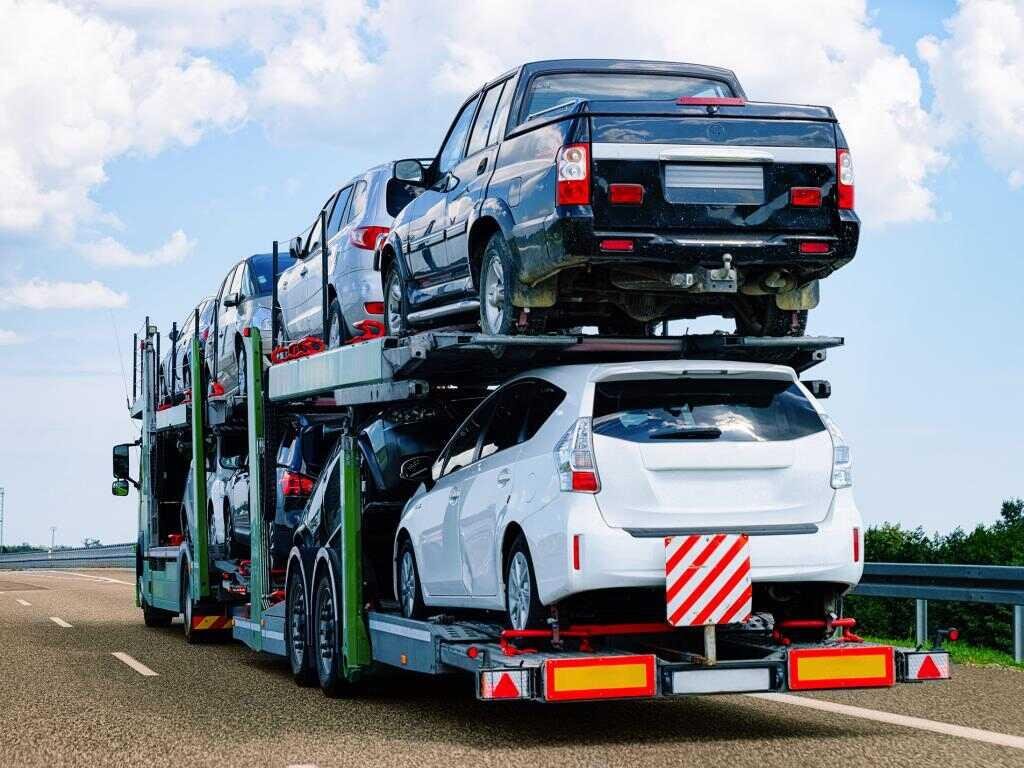
Unless you have a Commercial Driver’s License (CDL) or are an RV aficionado, driving a rented moving truck for a long-distance move is likely to be the biggest vehicle you will ever command. But what about your car? Is it better to tow your vehicle behind the moving truck or use a reputable, licensed, and bonded auto transport specialist?
If you just look at the base numbers, it is usually cheaper to tow your car behind the moving truck as you move across country, but that does not take into account the cost of repairing damage to your vehicle that can happen when towing. Yes – if done incorrectly you can cause serious damage to your car.
The good news about towing a vehicle is that generally the mileage doesn’t go up when the motor is off, as is the case with towing. But then again, when using an auto transport specialist, your car’s mileage will not go up either.
Towing Options
Options for towing your vehicle include using a dolly or using a trailer.
A tow dolly is a low-cost option for towing a front wheel drive vehicle. The front wheels are lifted off the ground, and the real wheels are engaged with the road. U-Haul, Budget, and Penske all offer tow dollies. However, tow dollies are typically not advised for long distance moves.
Car trailers are easier to use than dollies, offer less chance of damage, and are preferable for long distances and heavier cars or trucks. With trailers, all four wheels of the towed vehicle are off the ground.

Protect your Transmission
One of the most common ways automobiles are damaged when towed involves the transmission. When a vehicle is towed with a dolly and the two non-drive wheels are on the ground, there is less chance of damage – but the risks are still there. To tow a four-wheel drive vehicle with a dolly, you would need to remove the rear drive shaft and tow with the back wheels on the ground.
According to an article “Towing and Transmission Damage: What You Need to Know” hosted by American & Foreign Transmission Service at aftranny.com, a vehicle’s gear position during towing can factor into if damage will occur. There are three gear positions to take into consideration: Emergency, Park, and Neutral.
Having your towed vehicle in neutral is the safest and most secure way to prevent transmission damage during the journey. Having the vehicle in park or with the emergency brake on will prevent the wheels from turning, which will damage both the tires and the transmission.
Even with your vehicle in neutral, damage still can occur when towing. Having your car in neutral disengages the engine, however it does not disengage the transmission. If you are towing your car over a long distance the transmission can still overheat, leading to serious and expensive damage.
Sticks and Stones
When you tow your car across country behind a moving truck, it is in a direct trajectory for road debris that can get kicked up and dent car panels, scratch paint, crack windows, or break headlights. One way to minimize the chance of significant damage from road debris is to use a “Tow Car Shield”. This is a piece of safety equipment that is placed on the front of the car being towed. As the name suggests, it is a protective shield that will decrease the chance of damage to the car.
In the case of towing a vehicle behind an RV, there is another step that can be taken for your car’s safety. Similar to mud flaps on a truck, tow guard rock deflectors are devices that can be affixed to the rear of the RV that is doing the towing. The low hanging rock deflector will diminish the amount of debris getting kicked up.

Avoid the Damage
The safest way to transport your car when moving is to use an expert. A-1 Auto Transport, for example, offers both open air and enclosed transport options for your vehicle.
Open-air carriers can transport six to 12 cars at once, sometimes more. Since there are more vehicles being transported on an open-air carrier, the cost is split among the various automobile owners which results in a lower overall cost per car.
Unlike open-air carriers, enclosed carriers offer space for only a few cars. But they offer protection on all sides. This protection can be either soft-sided or hard-sided.
Soft-side enclosed transport does a good job of protecting your car. It can often prevent damage from small rocks, wind, and rain. Hard-sided enclosed auto transportation is the option that will offer the most protection. Your car is completely protected on all sides.
Enclosed carriers are also typically equipped with a hydraulic lift for loading and unloading. This can be important when loading vehicles with low ground clearance. Open-air carriers do not have hydraulic lifts.
With less vehicles on board, enclosed carriers are more expensive than open-air carriers, but sometimes that added cost is worth the peace of mind knowing your car will safely reach your destination.

Get a Free Estimate
Renting a dolly cost approximately $50 per day. Renting a trailer can cost about double that. If you are engaged in a local move under 500 miles, you may get away with towing your car – but for a long-distance move, is the risk of damage to your vehicle really worth it?
Professional auto transport companies specialize in getting your car where you need it, when you need it, and without damage.
A-1 Auto Transport offers free estimates for open-air and enclosed carrier car shipping. Do your due diligence and see which option is best for you.






 Share on Facebook
Share on Facebook Share on LinkedIn
Share on LinkedIn Share on Twitter
Share on Twitter




 Google
Google  Instagram
Instagram  Trustpilot
Trustpilot 



